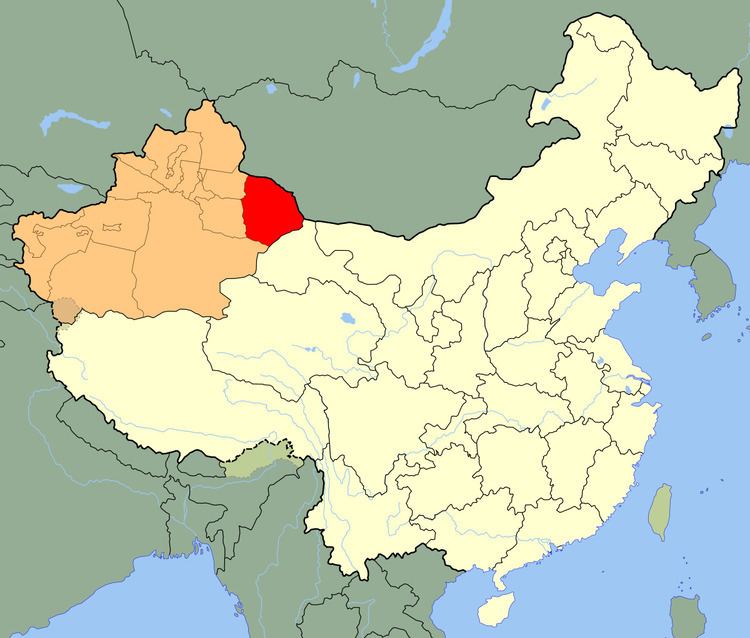Established 1696 Capital Hami City | Government Monarchy Founded 1696 | |
 | ||
Languages Chinese language, Uyghur language (Turki) | ||
The Kumul Khanate was a semi-autonomous feudal Turkic khanate within the Qing dynasty and then the Republic of China until it was abolished by Xinjiang governor Jin Shuren in 1930.
The khans of Kumul were direct descendants of the khans of the Chagatai Khanate. It came under Qing rule in 1696 and remained a khanate as a part of the Qing Empire.
The Ming dynasty established a tributary relationship with the Kumul Khanate, which was heavily involved in the Ming–Turpan conflict. The Khanate paid tribute to the Ming. The Kumul Khanate under Sa'id Baba supported Chinese Muslim Ming loyalists during the 1646 Milayin rebellion against the Qing dynasty. After the defeat of the Ming loyalists, during which the Kumul Prince Turumtay was killed at the hands of Qing forces, Kumul submitted to the Qing.
Beginning in 1647, the rulers of Hami submitted to the Qing dynasty and sent tribute. The title "Jasak Darhan" was granted to Abdullah Beg, ruler of Hami in 1696 after submitting to the Qing as a vassal during the Dzungar–Qing War.
The khanate had fought against the Dzungars for the Qing. Kumul continued as a vassal khanate when Xinjiang was changed into a province in 1884 after the Dungan revolt.
The khans also were given the title of Qinwang (Prince of the First Rank Chinese: 親王; pinyin: qīn wáng), by the Qing Empire. The khans were allowed enormous power by the Qing court, with the exception of administering execution, which had to be allowed by a Chinese official posted in Kumul. The khans were officially vassals to the Emperor of China, and every six years were required to visit Beijing to be a servant to the Emperor during a period of 40 days.
It was also known as the principality of Kumul, and the Chinese called it Hami. The khans were friendly to Chinese rule and authorities.
The Khan Muhammad and his son and successor Khan Maqsud Shah heavily taxed his subjects and extorted forced labor, which resulted in two rebellions against his rule in 1907 and 1912.
The khan was assisted by a chancellor/vizer/chief minister in his court. The last khan, Maqsud Shah, had Yulbars Khan, the tiger Prince of Hami as his chancellor.
The khan paid tribute to the Xinjiang government in Ürümqi.
The Han Chinese Governor of Xinjiang, Yang Zengxin was a monarchist, and tolerated the khanate, and was friendly toward the khan Maqsud Shah.
Around the 1920s Japanese secret agents began exploring the Kumul area.
It was the fact that the khanate existed which prevented the Uyghurs from rebelling, since the khanate represented a government where a man of their ethnicity and religion was reigning. The abolition of the khanate led to a bloody rebellion.
Upon Maqsud Shah's death in 1930 Jin Shuren replaced the khanate with three normal provincial administrative districts Hami, Yihe, and Yiwu. This set off the Kumul Rebellion, in which Yulbars Khan attempted to restore the heir Nasir to the throne.
